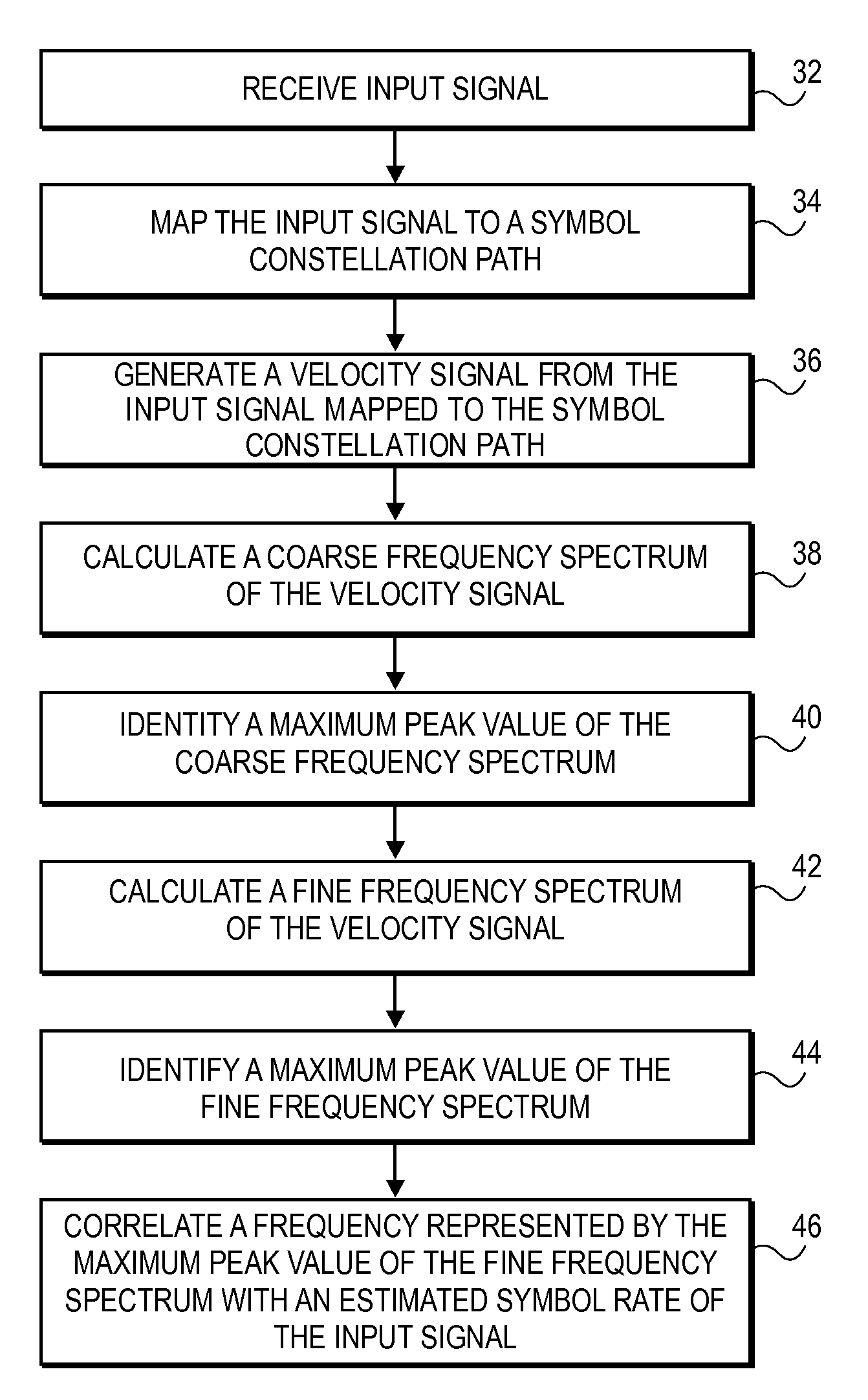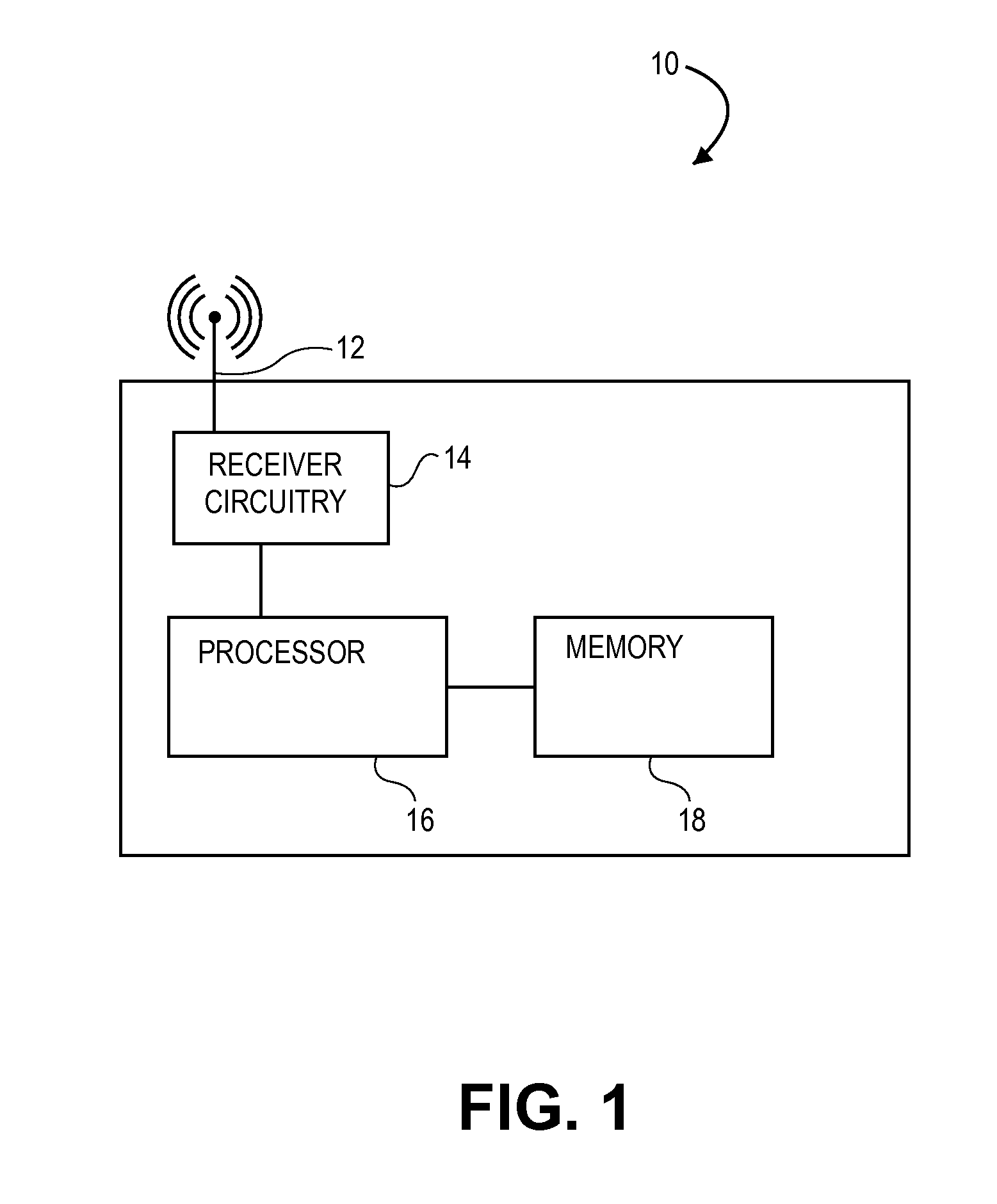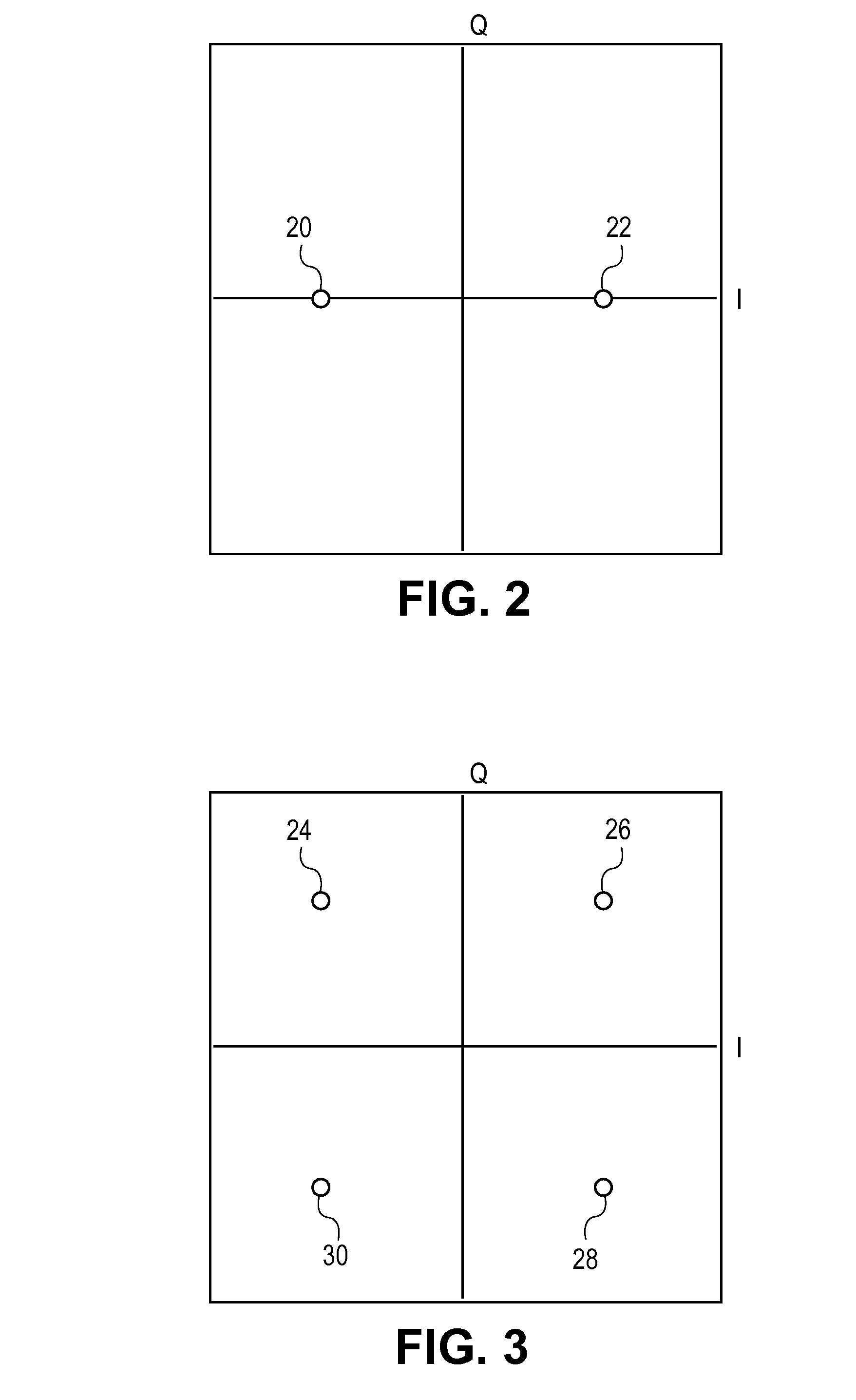System and method for symbol rate estimation using vector velocity
a vector velocity and symbol rate technology, applied in the field of signal processing, can solve problems such as ineffective existing methods of symbol rate estimation, impede symbol rate estimation using the known techniques, and suffer from various problems and limitations
- Summary
- Abstract
- Description
- Claims
- Application Information
AI Technical Summary
Benefits of technology
Problems solved by technology
Method used
Image
Examples
Embodiment Construction
[0031]A receiver operable to estimate a symbol rate of a received signal according to principles of the present teachings is illustrated in FIG. 1 and designated generally by the reference numeral 10. The receiver 10 comprises an antenna 12, receiver circuitry 14, a processor 16, and a memory component 18. The receiver 10 may further include other conventional components not illustrated or described herein, such as, for example, a power supply and user interface elements.
[0032]The receiver circuitry 14 is operable to detect signals collected by the antenna 12 and condition the signals to be analyzed by the processor 16. The receiver circuitry 14 may convert signals received via the antenna 12 to digital format, generating a series of digital sample values representing the received signal. The receiver circuitry 14 may include circuitry adapted specifically for use with one or more particular encoding schemes. For example, it is common in quadrature phase shift keying to separate an ...
PUM
 Login to View More
Login to View More Abstract
Description
Claims
Application Information
 Login to View More
Login to View More - R&D
- Intellectual Property
- Life Sciences
- Materials
- Tech Scout
- Unparalleled Data Quality
- Higher Quality Content
- 60% Fewer Hallucinations
Browse by: Latest US Patents, China's latest patents, Technical Efficacy Thesaurus, Application Domain, Technology Topic, Popular Technical Reports.
© 2025 PatSnap. All rights reserved.Legal|Privacy policy|Modern Slavery Act Transparency Statement|Sitemap|About US| Contact US: help@patsnap.com



